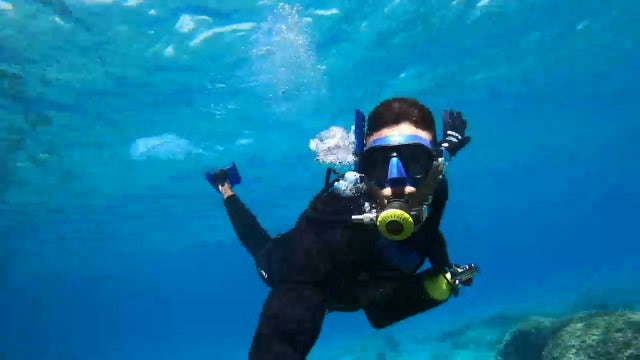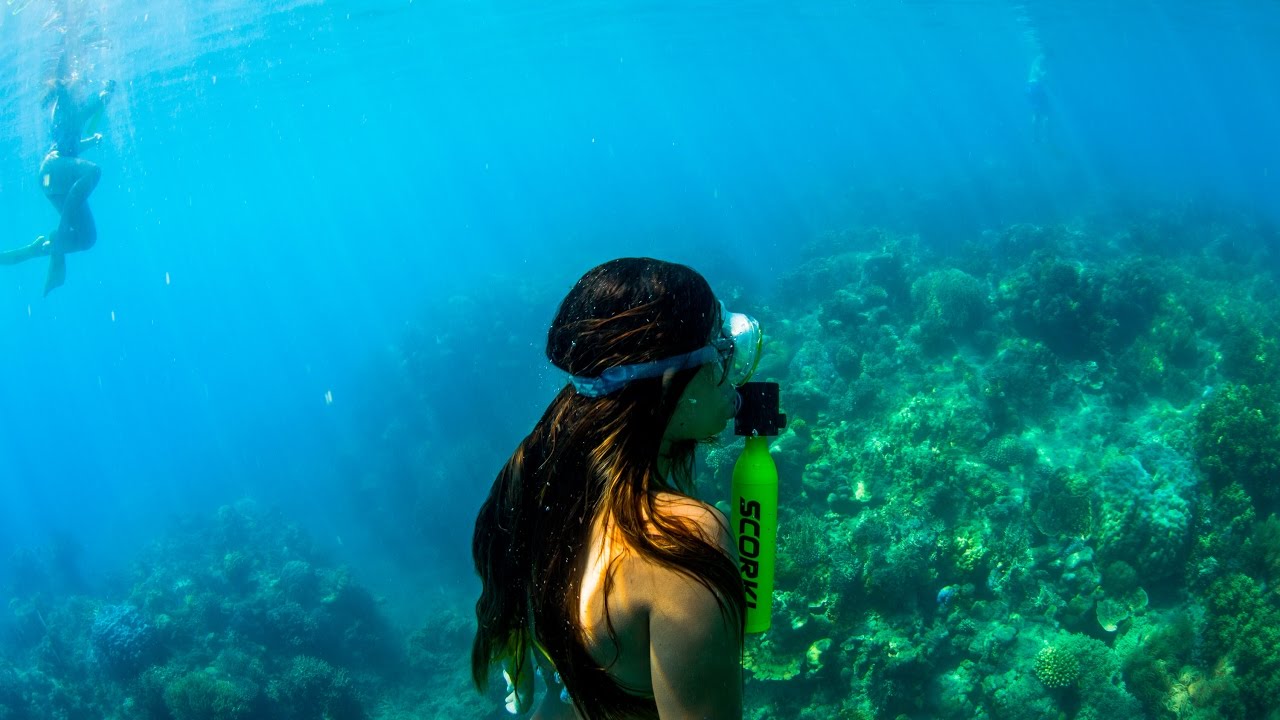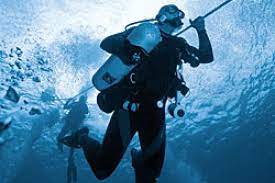Snorkeling with a mini tank offers about 20-30 minutes of enhanced underwater exploration, ideal for beginners seeking extended surface dives without heavy gear. However, its limited air supply restricts deeper adventures and requires mindful air monitoring, while the compact size provides portability but may not suit those seeking longer, more immersive scuba experiences.
More Air, Less Effort
Using a mini tank (typically 0.5L–1L capacity, holding around 100–250 psi or 7–17 bar pressure) gives snorkelers 20–30 minutes of extra bottom time compared to just breath-holding or using a traditional snorkel, which limits you to surface swimming.Most mini tanks weigh only 1–2 kg (2–4 lbs)when full, making them easy to carry but still providing enough air for 1–2 extra dives per session if you’re just exploring shallow reefs (depths up to 3–5 meters or 10–15 feet).
For example, a standard snorkeler might surface every 30–60 seconds to breathe, but with a mini tank, you can extend that to 2–3 minutes per dive cycle before needing to surface. The air volume in a 1L tank at 200 psi (14 bar) roughly equals about 0.07 cubic feet of usable air, which isn’t a lot but is enough for short exploration dives where you’re not swimming down deep.
The average person can hold their breath for 30–90 seconds, but with a mini tank, that extends to 2–3 minutes, giving you more time to look at fish or coral without stress. The regulator (usually a simple first-stage + mouthpiece setup) ensures air flows smoothly, and because the tank is small, you don’t waste much air—most users consume only 50–100 psi (3–7 bar) per short dive.
Compared to a full scuba setup (which gives 40–60 minutes of air but weighs 10–15 kg/22–33 lbs), a mini tank is way lighter and simpler, but it still gives you a noticeable boost in underwater comfort. The cost is also low—mini tanks usually rent for 20 per day or can be bought for 60.
Just don’t expect it to last more than 30 minutes max or work well beyond 5 meters (15 feet) deep, since pressure increases and air runs out faster at depth.
Easy to Carry Around
A mini tank (typically 0.5L–1L in volume, weighing just 1–2 kg / 2–4 lbs when full) is way more portable than a full scuba setup (which can weigh 15–20 kg / 33–44 lbs including tank, BCD, and regulators).The compact dimensions (usually 20–30 cm / 8–12 inches tall and 5–8 cm / 2–3 inches in diameter) mean it fits easily in a backpack side pocket or even a large dry bag.
The weight difference is huge—while a standard aluminum 80 scuba tank weighs 14–16 kg / 31–35 lbs when full. Most airlines allow mini tanks as carry-on or checked baggage (as long as the pressure is below 200 psi / 14 bar, which is standard for these small tanks).
The setup is also faster because you don’t need a full BCD (buoyancy control device) or weight belt—just clip the mini tank to your waist with a simple nylon strap (usually included, costing 10 extra). Most users can attach and detach the tank in under 1 minute, compared to the 5–10 minutes it takes to gear up for scuba diving. The regulator (usually a basic 1st stage + mouthpiece) adds minimal bulk (weighing just 100–200 grams / 3–7 oz) and connects directly to the tank without extra hoses or complicated adjustments.
|
Comparison |
Mini Tank Setup |
Full Scuba Setup |
|---|---|---|
|
Weight (Full) |
1–2 kg (2–4 lbs) |
14–16 kg (31–35 lbs) |
|
Dimensions |
20–30 cm (8–12 in) tall, 5–8 cm (2–3 in) diameter |
60–70 cm (24–28 in) tall, 20–25 cm (8–10 in) diameter |
|
Carry Method |
One-handed, backpack-friendly |
Needs special rack or trunk space |
|
Airline Friendly? |
Yes (if under 200 psi / 14 bar) |
Usually banned |
|
Setup Time |
Under 1 minute |
5–10 minutes |
Even the hose and mouthpiece add minimal drag (the regulator hose is usually 30–40 cm / 12–16 in long, so it doesn’t get in the way of swimming), and because the tank is small, it doesn’t weigh you down like a full scuba setup would.

Not for Deep Diving
The core issue is air consumption rate, which increases dramatically with depth due to water pressure (which rises by 1 atmosphere every 10 meters / 33 feet). A mini tank, with its small air volume (typically 0.5-1 liter of compressed air at 200-250 psi).
-
At just 5 meters (16 feet) deep, the ambient pressure is 1.5 times surface pressure. This means each breath you take consumes 1.5 times more air from your tank than it would on the surface. Your 20-30 minute air supply at the surface suddenly shrinks to roughly 13-20 minutes.
-
At 10 meters (33 feet), pressure doubles. Your air consumption rate doubles, slashing your bottom time to 50% of the surface time—just 10-15 minutes.
-
Most mini tanks are equipped with simple, unbalanced regulators. These become increasingly harder to breathe from at depths beyond 6-7 meters (20-23 feet).
-
The maximum operating depth (MOD) for most recreational mini tanks is recommended by manufacturers to be no greater than 6 meters (20 feet).
The anxiety of watching a pressure gauge drop rapidly at depth can cause panic breathing, which skyrockets your air consumption rate from a resting rate of 15-20 breaths per minute to 30+ breaths per minute. This can deplete a 1L tank in under 5 minutes at 10 meters, turning a fun dive into a stressful situation. For true deep diving—exploring reefs at 18-30 meters (60-100 feet)—a standard 12L aluminum 80 scuba tank providing 40-60 minutes of bottom time is the only safe and practical tool.
Short Underwater Time
The usable air volume in a standard 1L mini tank pressurized to 200 psi (14 bar) is approximately 15-18 liters of free air (expanded to surface pressure).
A calm, experienced snorkeler might have a resting RMV of 10-12 liters per minute at the surface. A nervous or actively swimming beginner can easily consume 25-30 liters per minute.
-
Calm Snorkeler (RMV 12 L/min): A 1L tank's 18L of air would last approximately 1.5 minutes of continuous submerged breathing. In practice, this user might take 4-5 separate 90-second dives, surfacing for 30-60 seconds between each to breathe normally, yielding a total submerged time of 7-8 minutes over a 15-minute session.
-
Active Snorkeler (RMV 25 L/min): The same tank's air supply is exhausted in under 45 seconds of continuous use. This user might only get 2-3 brief dives of 30-40 seconds each, for a total submerged time of just 1.5-2 minutes before the tank is empty.
|
User Profile |
Breathing Rate (L/min) |
Estimated Continuous Use Time |
Estimated Total Session Use (intermittent dives) |
|---|---|---|---|
|
Calm, Resting Snorkeler |
10-12 L/min |
1.5 - 1.8 minutes |
7-9 minutes over 20 min |
|
Average, Active Snorkeler |
18-20 L/min |
0.9 - 1.0 minutes |
4-5 minutes over 15 min |
|
Stressed or Swimming Hard |
25-30 L/min |
0.6 - 0.7 minutes |
2-3 minutes over 10 min |
This is why the often-advertised "20-30 minutes" is highly misleading. This figure is a theoretical maximum calculated under ideal, unrealistic conditions: a person lying perfectly still on the bottom in shallow 1-meter water, taking very slow, deep breaths (RMV of ~6-8 L/min). Real-world use, involving kicking to maneuver, fighting current, or the excitement of seeing fish, typically cuts this time by 50-75%.
If you are on a full-day snorkeling trip lasting 4-5 hours, a single mini tank provides air for less than 2% of that total time. To have a meaningful amount of submerged air throughout the day, you would need to bring 4-5 mini tanks, which quickly becomes cumbersome and expensive compared to a single scuba tank rental that provides 50-60 minutes of continuous, deep air.
Simple to Learn and Use
You can go from unboxing the equipment to your first dive in under 5 minutes, with no formal certification or complex training required. The entire system typically consists of just three components: the mini tank (1-2 kg), a first-stage regulator, and a mouthpiece, connected by a single short hose (~30 cm / 12 inches long).
-
Setup Time: The physical process of attaching the regulator to the tank valve is a simple quarter-turn motion that takes less than 10 seconds. A complete beginner can be fully geared up and in the water in under 2 minutes after their first try, compared to the 10-15 minute process for a full scuba setup which requires assistance for most new divers.
-
Learning Curve: The average user achieves basic operational competence after just 1-2 practice dives in a pool or calm shallow water. This is a fraction of the time investment required for a 3-4 day Open Water Diver certification course, which involves ~24 hours of academic and practical training.
-
Maintenance & Cost: Post-dive maintenance involves a quick 5-minute freshwater rinse for the regulator and tank. There are no expensive annual servicing requirements for the regulator like those mandated for scuba gear, which can cost 100 per year. The initial investment is low (120 for a basic setup), and there are no recurring certification fees (e.g., PADI Open Water certification costs 800).
The physical act of using it is almost identical to breathing from a snorkel, but with the crucial difference of having a continuous supply of air for 1-3 minutes per dive.





اترك تعليقًا
تخضع جميع التعليقات للإشراف قبل نشرها.
This site is protected by hCaptcha and the hCaptcha Privacy Policy and Terms of Service apply.